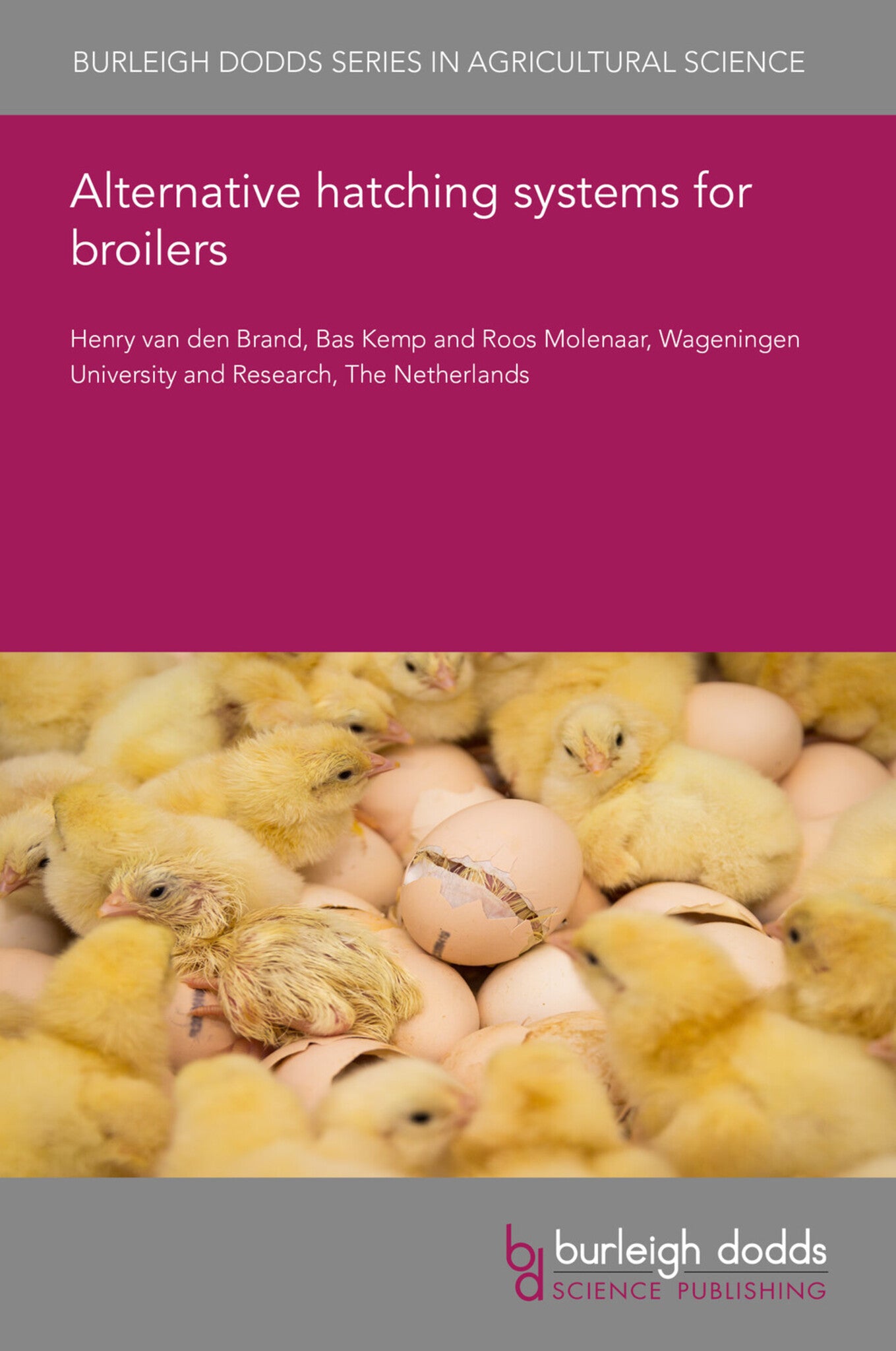We're sorry. An error has occurred
Please cancel or retry.
Alternative hatching systems for broilers

Some error occured while loading the Quick View. Please close the Quick View and try reloading the page.
Couldn't load pickup availability
- Format:
-
29 May 2023

In the conventional hatching system environmental conditions (such as temperature, level of dust, use of disinfectants) may be suboptimal and furthermore, chickens lack access to feed and water until placement in the rearing house, which may be suboptimal too. This has led to development of alternative hatching systems. These alternative hatching systems differ in various ways from conventional hatching systems and these differences may affect day-old chicken quality as well as later life health, welfare and performance. This chapter compares alternative hatching systems with the conventional hatching system. It can be concluded that alternative hatching systems might be less challenging for chickens than the conventional hatching system, but effects on day-old chicken quality, and later life health, welfare and performance vary. For optimal chicken health, welfare and performance, settings in both the conventional and alternative hatching systems are more important than the hatching system itself.

TECHNOLOGY & ENGINEERING / Agriculture / Animal Husbandry, Poultry farming, TECHNOLOGY & ENGINEERING / Agriculture / Sustainable Agriculture, Sustainable agriculture, Agricultural science

- 1 Introduction
- 2 Current alternative hatching systems
- 3 Differences between conventional and alternative hatching systems: environmental factors
- 4 Differences between conventional and alternative hatching systems: management factors
- 5 Effects of alternative hatching systems on health, welfare and production
- 6 Conclusion
- 7 References



